Japanese Traditional Crafts, Samurai Armor & Helmet
Aka-Kawaodoshi Samurai Armor: History and Features of The Japan’s National Treasure
Bright red plating, dramatically layered and strung together to show off the size and shape of its wearer – this is the Aka-Kawaodoshi samurai armor from today’s Okayama Prefecture in western Japan. Crafted during the late Heian period, the Aka-Kawaodoshi set was used in the Genpei War of 1180-1185, a conflict that marked the beginning of the Kamakura shogunate and a massively important period of Japan’s Middle Ages. Still in beautiful shape today, the Akagawa samurai armour represents one of the best preserved pieces form this era. For its incredible legacy and great condition, this 800 year-old set of samurai armour is listed as an official National Treasure of Japan (Kokuhō). Said to reflect an era of Japan’s history largely devoid of comparable relics and artifacts, this set stands alone as a symbol of a bygone Japan.
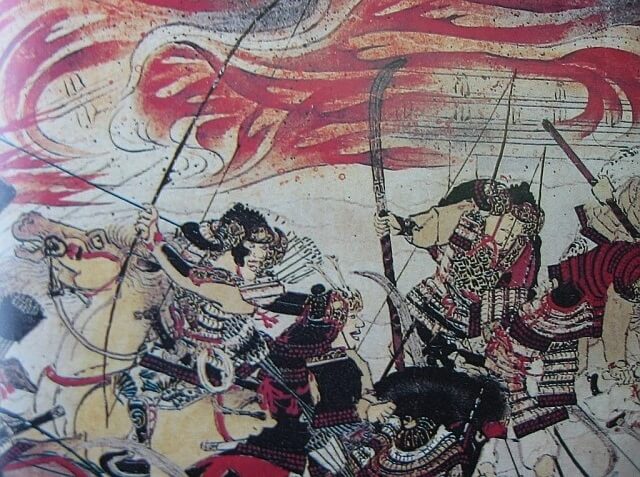
(Image: upload.wikimedia.org)
In today’s article I want to provide an overview and background of this specific set of samurai armour, introducing you to the traditional Japanese craft of armor smithing while explaining what makes the Aka-Kawaodoshi set so unique. But to truly understand the Aka-Kawaodoshi, you need to know a little more about the types of armor popular in Japan some 800 years ago. So let’s get started.
The Roots of this Japanese Craft: Armor Smithing in Feudal Japan
Like many aspects of Japanese history and culture, the roots of its armor craft can be traced back to mainland Asia. From China and Korea trends and technologies were imported into the island empire, adapted and improved by centuries of innovation. Some of the earliest known examples of body plates and helmets manufactured in Japan have been dated by experts all the way back to the 4th century. Still, it is known that there was a tradition of armour making going back still further. How many of these wonderful pieces were lost in battle, we will never know.
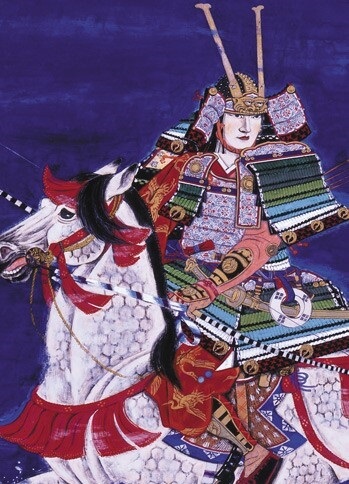
(Image: kitazawamuseum.kitz.co.jp)
The ‘Japanese’ style of armour crafting is said to have emerged in form during the Heian period (794-1185 AD), marking the stark distinction between Japanese and continental traditions. It is important to note that today’s piece, the Aka-Kawaodoshi Samurai Armour Set is a Japanese craft from precisely this period.
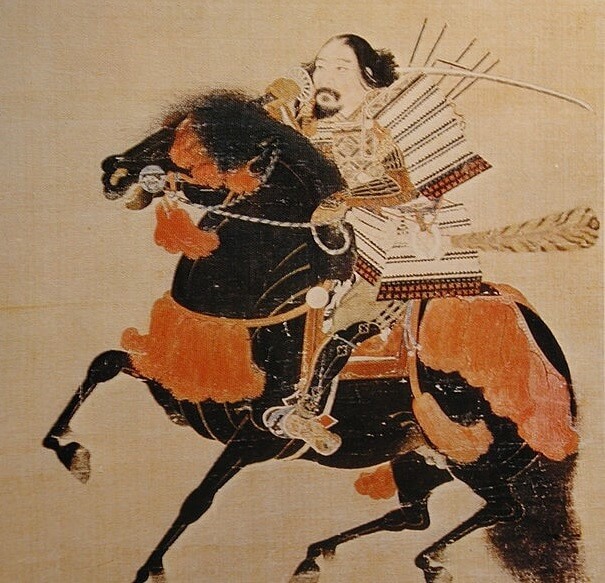
(Image: ja.wikipedia.org)
With a mix of leather and lacquered components, hinges, and joints, these sets offered breathable, flexible, weatherproof protection from the enemy. Still, the main component remained heavy steel; despite their small, almost delicate-looking components, the metal scales add up. The Aka-Kawaodoshi Samurai Armour comes in at a hefty 25 kilograms (55.1 pounds). That’s more than a full sack of potatoes. Imagine putting that on and charging into battle!
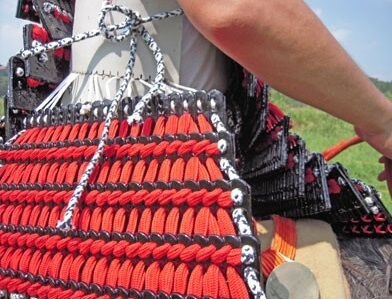
(Image: yoroikatchu.jugem.jp)
Fashion for Fear: Samurai Styles and Trends from Japan’s Middle Ages
According to experts at the Okayama Prefectural Museum, the late-Heian period was one filled with colourful samurai. Expressions of loyalty, class, rank, and creativity, these carefully decorated sets made the warriors stand out in a crowd. The most standard form of expression came with the use of coloured silk ties. These connected the various plates and components of the set, allowing some movement while providing a way to identify oneself and one’s armour in battle, parade, or even in storage. The strands were of course hand woven – the result of many hours of labour, each was then tied into the armour set one-by-one. In the case of the Aka-Kawaodoshi set, leather was treated and dyed red to add increased security and style. These dyes would have been the work of master craftsmen, as the colours they produced have proven to retain their vividness for some 8 centuries! The all-natural pigments were sourced and prepared in nearby Okayama, a hint to researchers trying to pinpoint the workshop where it was made.
Made for the Akagi clan (literally, “red-tree”), the red Aka-Kawadoshi has surely earned its name. Other than the colour, however, what does this specific set of amour tell us?
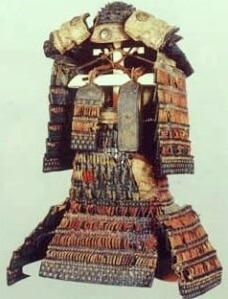
The large, boxy style of the Aka-Kawaodoshi identifies it as an early piece from that warring period of 1180s. Though this style (o-yoroi) would soon lose prominence amongst samurai warriors switching in favour of the increased flexibility and strength of later styles, the Aka-Kawaodoshi is special for its colourful appearance. Later trends pushed samurai armour towards a more standardized colour palette of darker and deeper shades. The Aka-Kawaodoshi instead shouts out its presence on the battlefield with eye-catching colour.
New Armour for a New Age: The post-Aka-Kawaodoshi Style
With the introduction of muskets to Japan in the 1500s, samurai armour had to be rethought and redesigned. Broader, thicker plates were adopted in place of individual scales, forever changing the way the samurai looked and moved. These Tosei-Do style sets, as they are classified, are the type we see most often on display in Japan today. Because they are newer, there are simply more left of them around! All this to show you just how unique the Aka-Kawaodoshi set truly is – a true example of a National Treasure, a distinction it was given in 1937. Today, the set is protected within the Okayama Prefectural Museum – resting peacefully and waiting for armour enthusiasts like us to come and see it for ourselves.
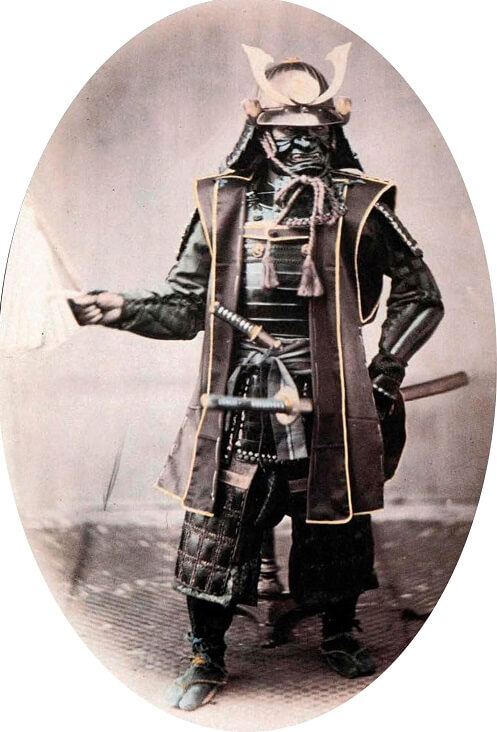

Author - Jay
In my spare time I enjoy watching baseball, tasting local cuisine, and exploring by road and rail. Having lived in several cities around the world, I have an appreciation for local as well as international histories and cultures. Excited by cultural and social exchange, it is my hope that this blog will help promote an interest in Japanese traditional wares and practises by introducing you to their history and meanings.


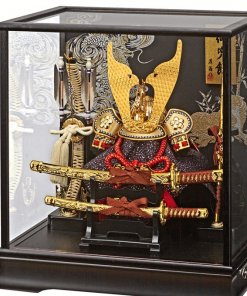
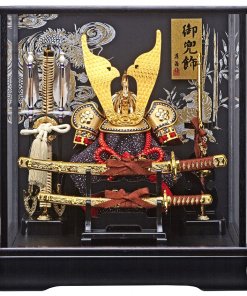
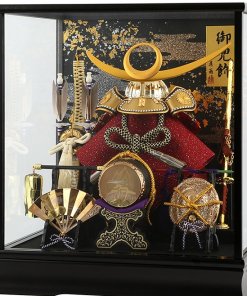
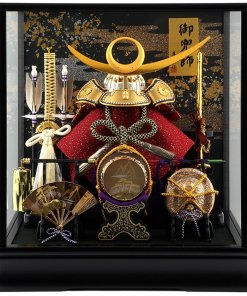
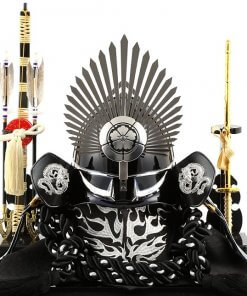
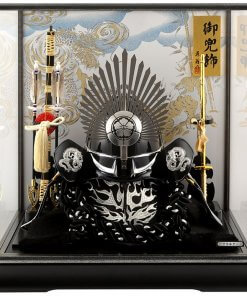
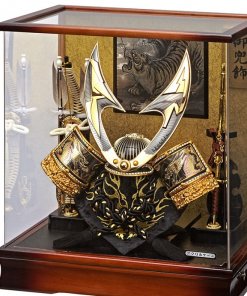
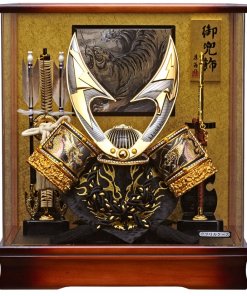
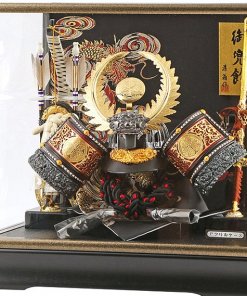
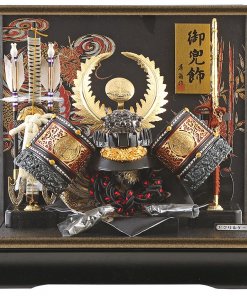
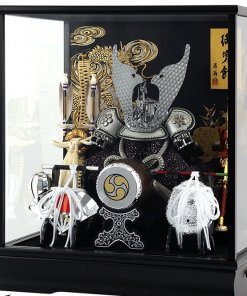
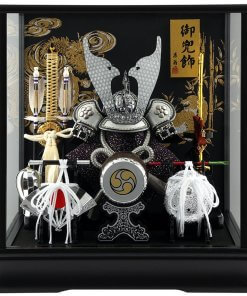
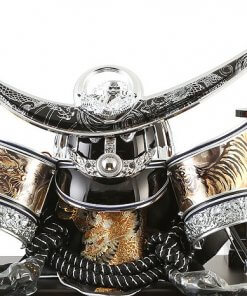
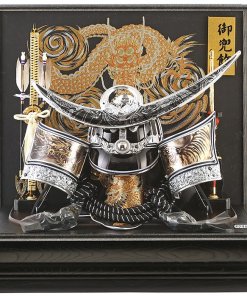
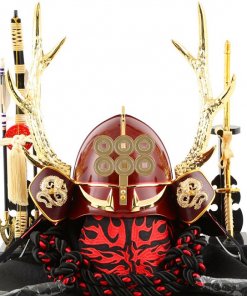

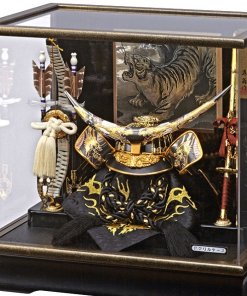
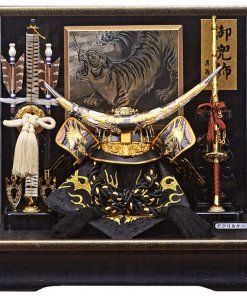
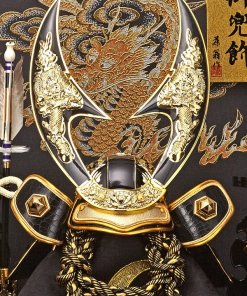
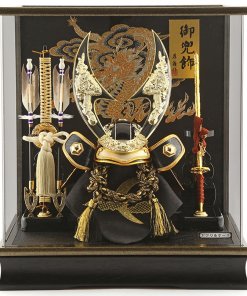
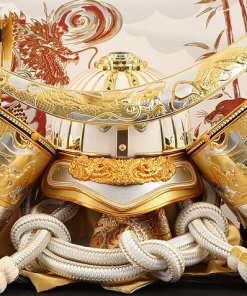
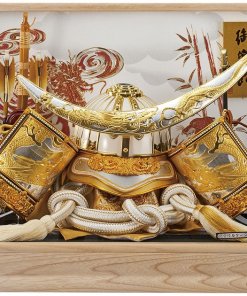
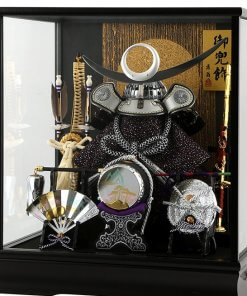
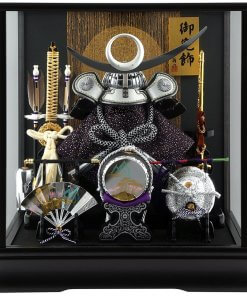
About Orientalsouls.com
Learn and Buy Japanese Craftsmanship, Tradition & Culture
OrientalSoul.com is the online shop where you can buy traditional crafts of Japan.
We only sell selected authentic products in which true spirits of Japanese craftsmanship exist.
You may be able to find similar products in other shops for lower prices. However, we sell products based on fair prices that worth labor and value of experienced craftsmen.
In addition, we introduce stories about product history, how a product is made, what makes it different from others, and how the product enriches your life!